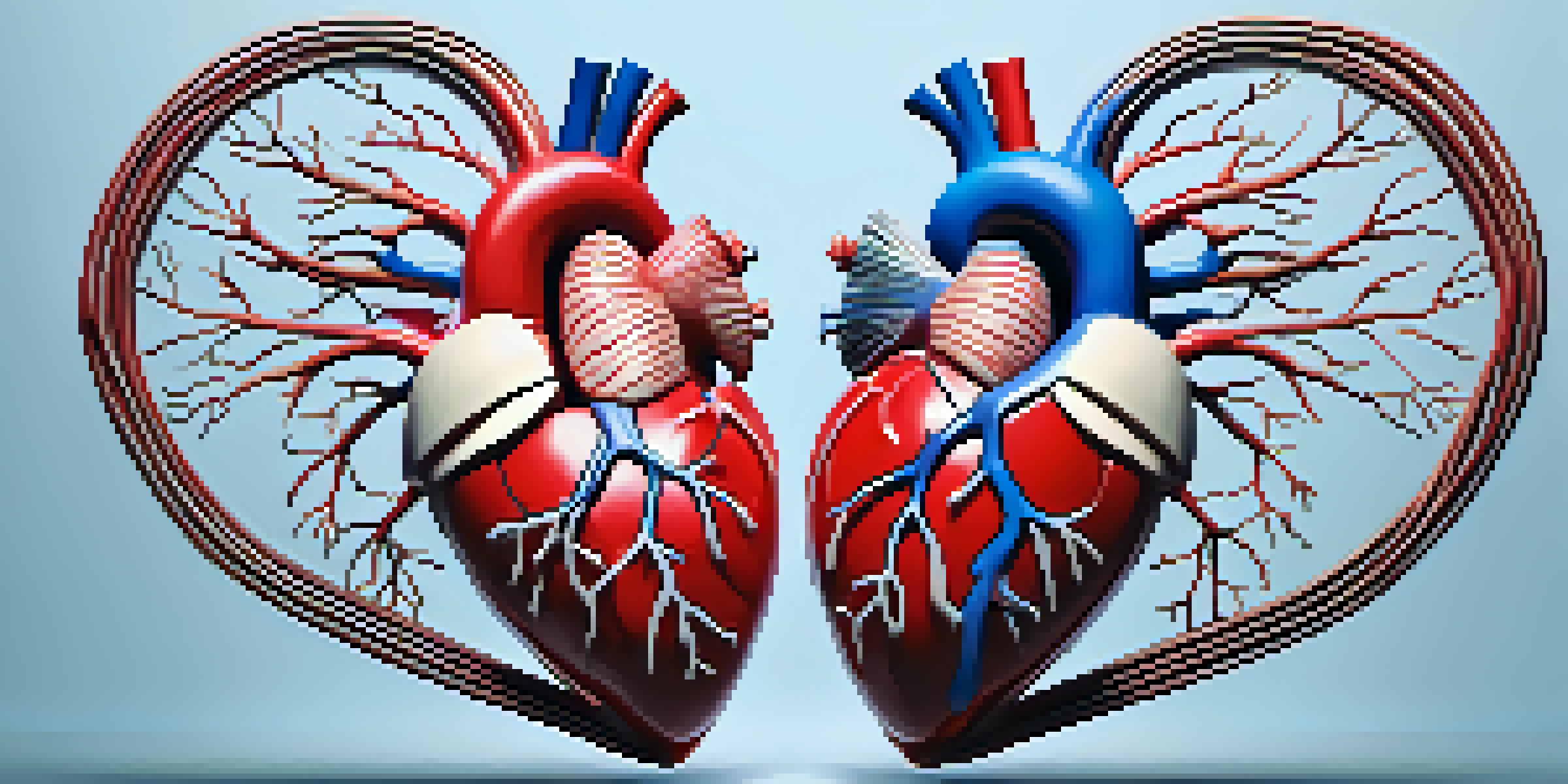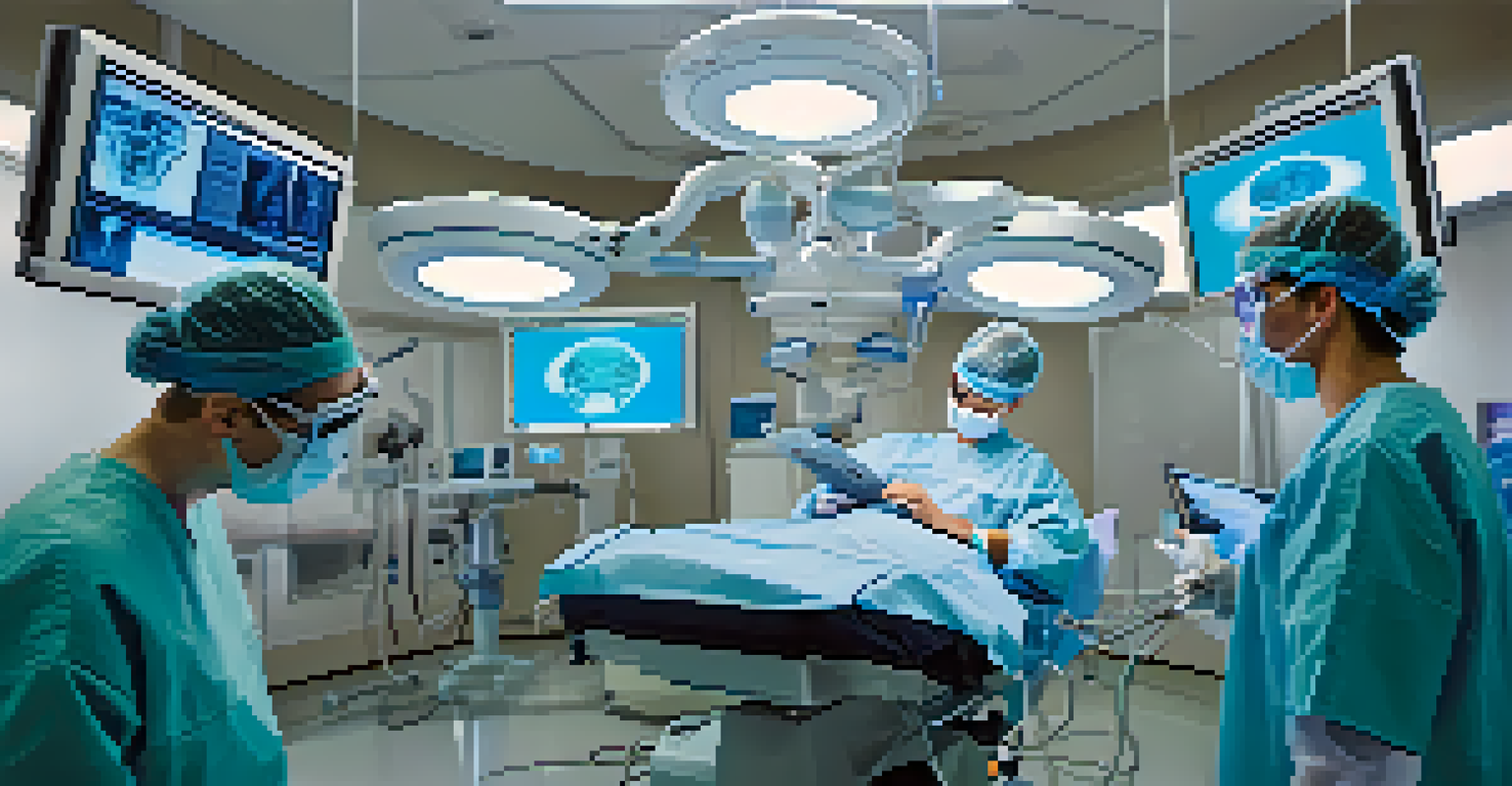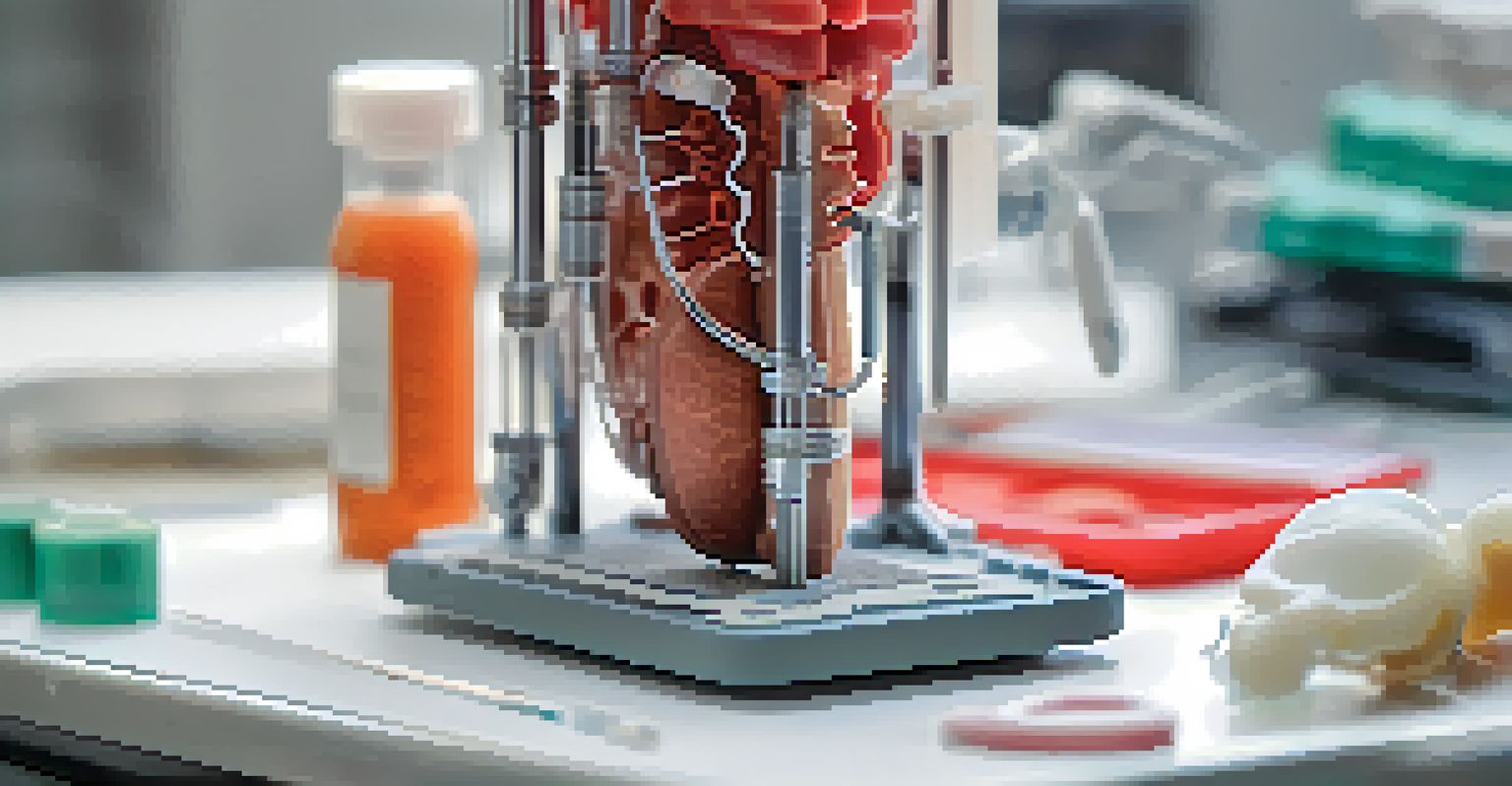Advancements in 3D Imaging Techniques for Medical Use

Introduction to 3D Imaging in Medicine
3D imaging has transformed the medical field, enhancing how we visualize the human body. Unlike traditional 2D imaging techniques, such as X-rays, 3D imaging allows for a more comprehensive view of anatomical structures. This advancement means that healthcare providers can make more informed decisions, ultimately improving patient outcomes.
3D imaging technology is revolutionizing the way we understand the human body, leading to better diagnosis and treatment.
The ability to create detailed three-dimensional models from scans opens new avenues in diagnostics and treatment planning. For instance, surgeons can now visualize complex anatomy before performing procedures, leading to more precise interventions. This level of detail is invaluable when dealing with intricate areas like the brain or the heart, where every millimeter counts.
As we delve deeper into the advancements in 3D imaging, we'll explore various techniques that are reshaping medical practices. From enhanced imaging modalities to innovative applications in surgery, the impact of these technologies is profound and far-reaching.
CT and MRI: The Backbone of 3D Imaging
Computed Tomography (CT) and Magnetic Resonance Imaging (MRI) are foundational to 3D imaging in medicine. These technologies provide detailed cross-sectional images of the body, which can be reconstructed into 3D formats. This capability has revolutionized how radiologists interpret scans and diagnose conditions.

For example, in oncology, 3D reconstructions from CT scans can help oncologists assess tumor size and spread more accurately. This is crucial for planning effective treatment strategies, as it allows for a better understanding of the tumor's relationship to surrounding tissues. Similarly, 3D MRI imaging is essential in neurological assessments, providing clarity on brain structures and abnormalities.
3D Imaging Enhances Patient Care
Advancements in 3D imaging technologies allow for more accurate diagnostics and personalized treatment plans, significantly improving patient outcomes.
The advancements in both CT and MRI technologies, such as faster scanning times and improved image resolution, continue to enhance their utility in medical imaging. As these techniques evolve, they pave the way for even more sophisticated applications in various medical fields.
The Role of Ultrasound in 3D Imaging
Ultrasound technology has also seen significant advancements, transitioning from traditional 2D images to 3D ultrasound imaging. This technique is particularly beneficial in obstetrics, where expectant parents can view detailed images of their unborn child. It adds a personal touch to prenatal care, making the experience more engaging and informative.
The integration of artificial intelligence and 3D imaging is not just enhancing efficiency; it's transforming healthcare as we know it.
Beyond obstetrics, 3D ultrasound plays a vital role in other medical areas, such as cardiology and musculoskeletal imaging. For instance, cardiologists can assess heart structures in greater detail, improving the diagnosis of congenital heart defects. Similarly, in musculoskeletal imaging, 3D ultrasound helps visualize soft tissues and joints, aiding in the diagnosis of conditions like tendon tears.
The non-invasive nature of ultrasound, combined with its capacity for 3D imaging, makes it a preferred choice in many clinical settings. As technology advances, we can expect further enhancements in image quality and diagnostic capabilities.
Advancements in 3D Printing for Medical Applications
3D printing, or additive manufacturing, is making waves in the medical field by creating patient-specific models from imaging data. Surgeons can now print replicas of organs and tissues, allowing for better pre-surgical planning. This practice not only improves surgical precision but also enhances the overall patient experience by reducing the risks associated with complex procedures.
For example, in orthopedics, 3D-printed implants can be tailored to fit a patient's anatomy perfectly. This customization leads to better integration with the body and improved recovery times. Moreover, 3D printing is being used to create prosthetics that are both functional and affordable, transforming the lives of amputees.
AI Revolutionizes Diagnostic Accuracy
Artificial Intelligence enhances 3D imaging by analyzing data for patterns, aiding in early disease detection and improving diagnostic efficiency.
The intersection of 3D imaging and printing is a remarkable advancement that illustrates how technology is personalizing healthcare. As these technologies continue to develop, we can anticipate even more innovative applications that will reshape medical practices.
Virtual and Augmented Reality in Medical Imaging
Virtual Reality (VR) and Augmented Reality (AR) are emerging as transformative tools in medical imaging. By integrating 3D imaging data into VR and AR environments, healthcare professionals can visualize complex anatomical structures in interactive ways. This technology enhances the learning experience for medical students and professionals alike.
For instance, surgeons can use AR to overlay digital images onto a patient's body during surgery, guiding them in real-time. This capability improves accuracy and reduces the likelihood of errors. Additionally, VR training simulations allow medical students to practice procedures in a risk-free environment, building their skills and confidence.
As these technologies become more accessible, their integration into medical imaging will likely expand. The potential for immersive, interactive experiences in healthcare is limitless and promises to enhance both education and patient care.
Artificial Intelligence and 3D Imaging
Artificial Intelligence (AI) is playing an increasingly important role in 3D imaging techniques, enhancing both efficiency and accuracy. AI algorithms can analyze vast amounts of imaging data to identify patterns and anomalies that may go unnoticed by the human eye. This capability not only speeds up the diagnostic process but also increases the likelihood of early detection of diseases.
For example, AI can assist radiologists in identifying tumors in mammograms or CT scans with remarkable precision. This technology acts as a second pair of eyes, providing an additional layer of assurance in diagnosis. Moreover, AI can automate routine tasks, allowing healthcare professionals to focus on more complex cases.
Future Trends in Medical Imaging
Emerging technologies like nanotechnology and molecular imaging promise to advance 3D imaging further, enabling more effective disease diagnosis and treatment.
The synergy between AI and 3D imaging is a game changer in the medical field. As AI technology continues to evolve, we can expect it to become an essential tool in enhancing the quality of healthcare services.
Future Trends in 3D Imaging for Medicine
Looking ahead, the future of 3D imaging in medicine is bright and full of potential. With advancements in technology, we can expect improvements in image resolution, scanning speed, and the integration of various imaging modalities. These developments will further enhance diagnostic accuracy and patient care.
Moreover, the ongoing research in nanotechnology and molecular imaging promises to bring 3D imaging to the cellular level. This could revolutionize how we diagnose and treat diseases at their earliest stages. Imagine being able to visualize cancer cells in three dimensions before they spread, allowing for targeted therapies that are more effective.

As we embrace these advancements, the landscape of medical imaging will continue to evolve, ultimately leading to more personalized and effective healthcare solutions. The future holds incredible possibilities for improving patient outcomes through innovative imaging techniques.